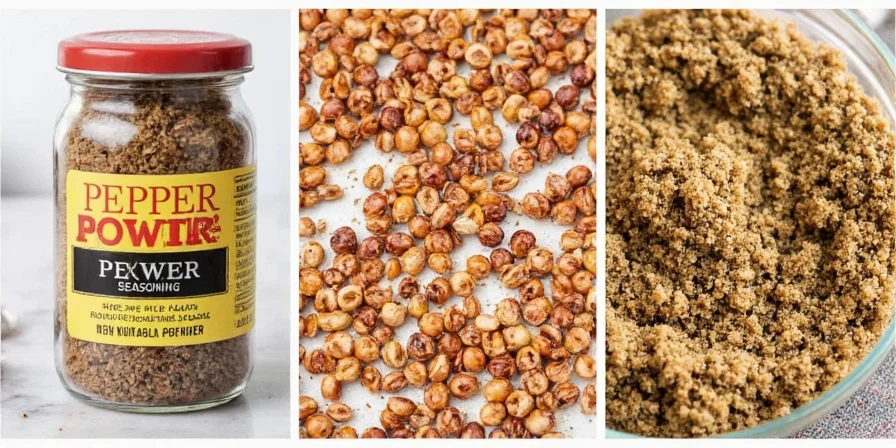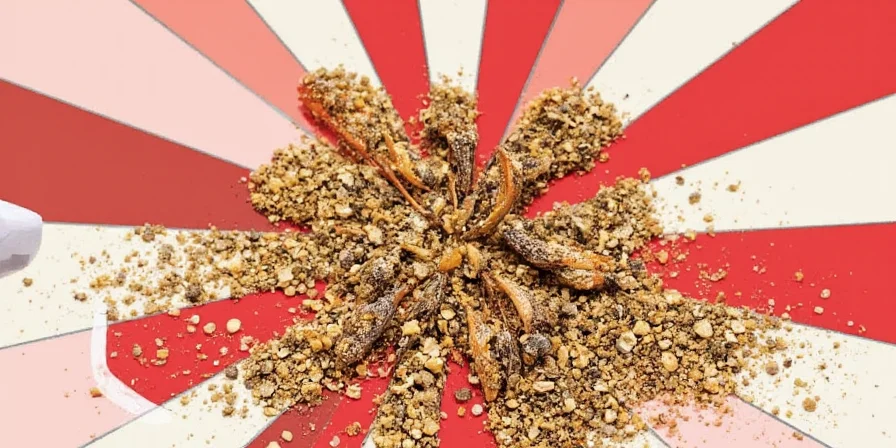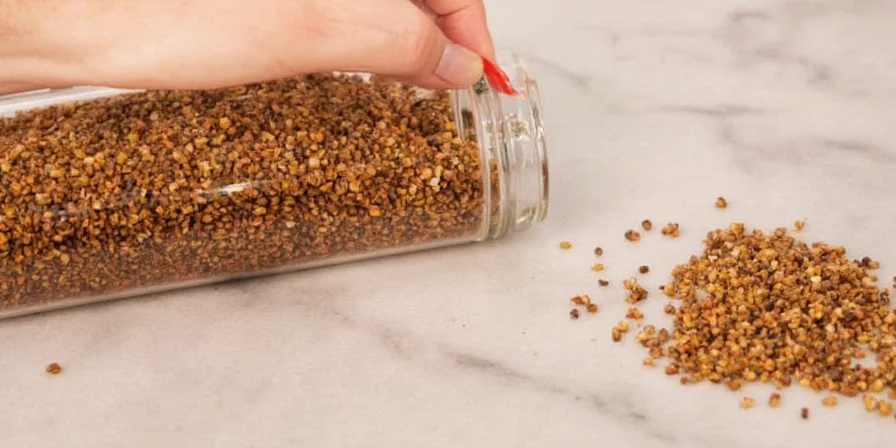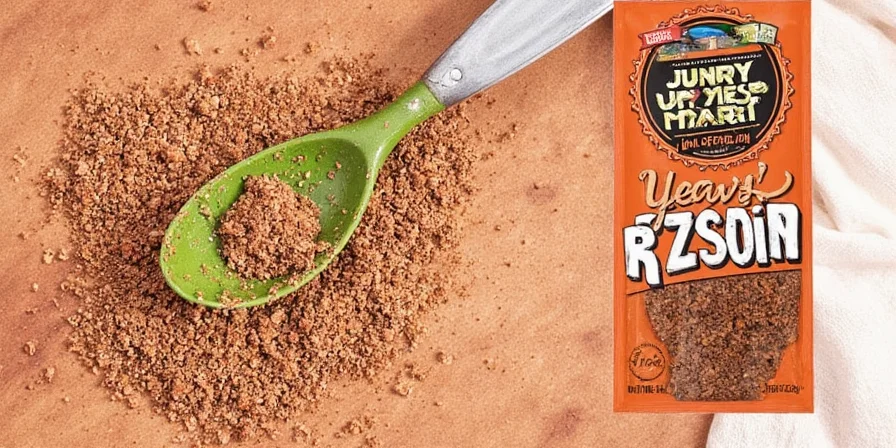Pepper Power: 10 Cracked Pepper Seasoning Hacks That’ll Make Your Taste Buds Dance
Welcome to the world of cracked pepper seasoning — where bold flavor meets rustic charm. Whether you're a seasoned chef or a weekend grill master, this spice deserves a starring role in your pantry. In this article, we'll explore everything from its earthy aroma to practical ways to use it like a pro.
So grab your grinder (or just imagine one), and let’s crack into this flavorful journey!
Table of Contents
- What is Cracked Pepper Seasoning?
- Why It Stands Out From Regular Pepper
- Top 10 Hacks to Use Cracked Pepper Like a Spice Pro
- Pairings That Pop: Flavor Combos You Need to Try
- Grinding vs. Cracking: What’s the Real Difference?
- Storing for Maximum Flavor: Don’t Let Your Pepper Go Flat
- How to Make Your Own Cracked Pepper Seasoning at Home
- When to Add It in Cooking: Timing Is Everything
- Myths Debunked: Separating Pepper Facts from Fiction
- Final Thoughts: Crack Open the Flavor!
What is Cracked Pepper Seasoning?
Cracked pepper seasoning isn’t just a fancy way to say “coarse black pepper.” It refers specifically to peppercorns that have been gently crushed — not fully ground — leaving behind irregular pieces with texture and depth.
This method preserves more of the essential oils and aromatic compounds found in whole peppercorns, giving cracked pepper a bolder, fresher taste than its powdered counterpart.

Why It Stands Out From Regular Pepper
Let’s break it down (pun intended). Here's how cracked pepper compares to regular ground black pepper:
| Feature | Cracked Pepper | Ground Black Pepper |
|---|---|---|
| Texture | Rough, chunky bits | Fine powder |
| Aroma | Strong, fresh scent | Muted, often stale |
| Flavor | Complex, spicy-savory punch | Dull, one-note heat |
| Shelf Life | Much longer due to oil retention | Short; loses flavor fast |
Top 10 Hacks to Use Cracked Pepper Like a Spice Pro
- Sprinkle it raw: Add right before serving steaks, grilled veggies, or salads for that extra kick.
- Toast it lightly: Dry roast cracked pepper in a pan to intensify its aroma — perfect for soups or stews.
- Make a rub: Mix with salt, garlic powder, and herbs for a killer steak or chicken seasoning.
- Bake it in bread: Press cracked pepper into focaccia or dinner rolls for a rustic touch.
- Infuse oil: Heat olive oil with cracked pepper for a spicy drizzle over pasta or pizza.
- Use in sauces: Stir into creamy mushroom sauce or aioli for added complexity.
- Add to butter: Whip softened butter with cracked pepper and lemon zest for a killer steak topper.
- Spice up eggs: A dash over scrambled or fried eggs brings instant flair.
- Season popcorn: Toss freshly popped kernels with melted butter and a sprinkle of cracked pepper.
- Cook with citrus: Pair cracked pepper with lemon or lime for a bright, zesty flavor combo.

Pairings That Pop: Flavor Combos You Need to Try
Cracked pepper plays well with others — here are some pairings that will elevate your dishes:
- Lemon & Garlic: Bright + savory + spicy = flavor magic.
- Truffle Oil: Earthy meets bold — a match made in heaven.
- Brown Butter: Deeply nutty and rich, enhanced by a little fire.
- Dark Chocolate: Surprisingly sexy when used sparingly in desserts.
- Sea Salt: Balance out coarse pepper with flaky salt for a textural party.
Grinding vs. Cracking: What’s the Real Difference?
You might be thinking, “Is there really a difference between grinding and cracking?” Yes, and it’s all about intention.
- Grinding: Turns peppercorns into fine powder — best for even distribution in soups, marinades, and baked goods.
- Cracking: Crushes the berries but leaves them in chunks — ideal for texture lovers who want visual and tactile appeal.
Storing for Maximum Flavor: Don’t Let Your Pepper Go Flat
Even the best cracked pepper seasoning can go downhill if stored improperly. Follow these storage tips to keep your spice fresh:
- Airtight container: Keeps moisture and air out — essential for preserving oils.
- Dark place: Light breaks down volatile compounds — store in a cabinet or drawer.
- Buy small batches: Spices lose potency over time; buy what you’ll use in 3–6 months.

How to Make Your Own Cracked Pepper Seasoning at Home
Want full control over your flavor? Here’s how to make cracked pepper from scratch:
- Choose high-quality whole black peppercorns (preferably Tellicherry or Malabar).
- Place in a ziplock bag or under a towel on a cutting board.
- Gently crush with a rolling pin or meat mallet until most pieces are split open but not fully pulverized.
- Store in an airtight container — done!
When to Add It in Cooking: Timing Is Everything
Like any great spice, timing matters. Here’s a quick guide:
| Dish Type | Best Time to Add Cracked Pepper |
|---|---|
| Steak | Before searing |
| Salads | After tossing |
| Pasta | Right after draining noodles |
| Grilled Vegetables | Right off the grill |
| Sauces | Last few minutes of simmering |
Myths Debunked: Separating Pepper Facts from Fiction
Let’s bust some myths about cracked pepper seasoning once and for all:
- Myth: More pepper means more flavor.
Truth: A little goes a long way — overpowering dishes can actually dull other flavors. - Myth: All cracked pepper is created equal.
Truth: Quality varies by origin, age, and processing method — shop smart. - Myth: Pepper has no nutritional value.
Truth: It contains piperine, which may help nutrient absorption and digestion.
Final Thoughts: Crack Open the Flavor!
Whether you’re shaking it over grilled salmon or infusing it into your homemade hot sauce, cracked pepper seasoning is a versatile powerhouse that belongs in every kitchen.
With these hacks, storage tips, and pairing ideas, you’re ready to take your cooking from bland to brilliant — one bold bite at a time.

Now go ahead — crack it, toast it, sprinkle it, and savor it. Your next meal just got a lot more exciting.










 浙公网安备
33010002000092号
浙公网安备
33010002000092号 浙B2-20120091-4
浙B2-20120091-4